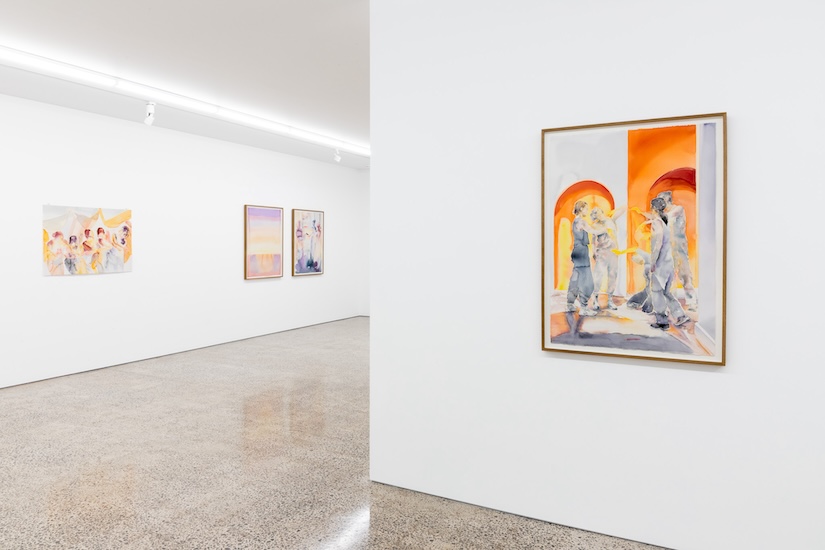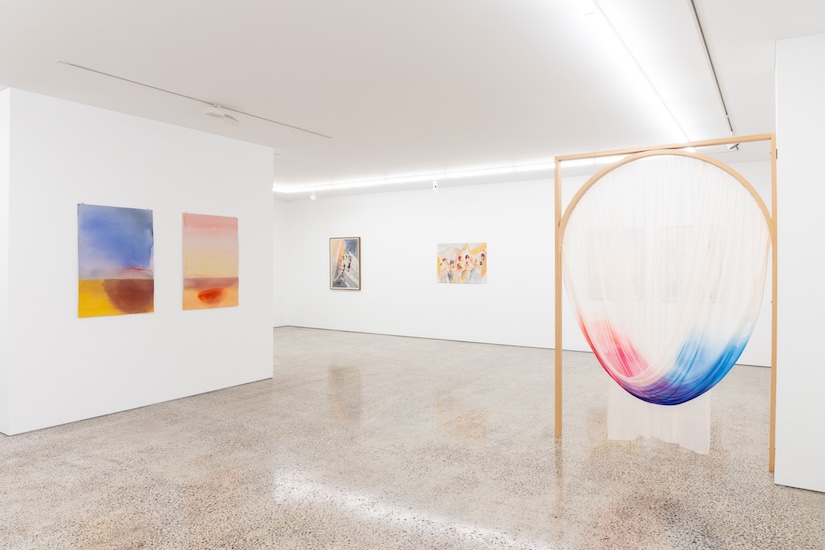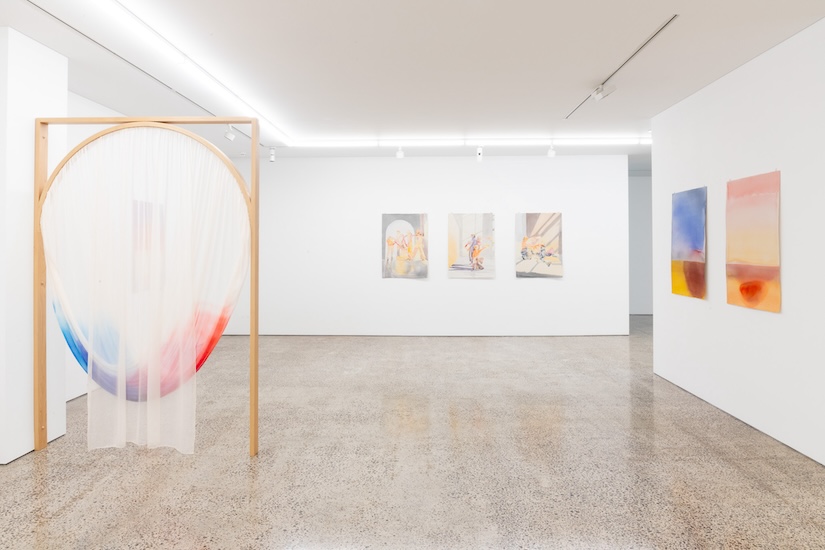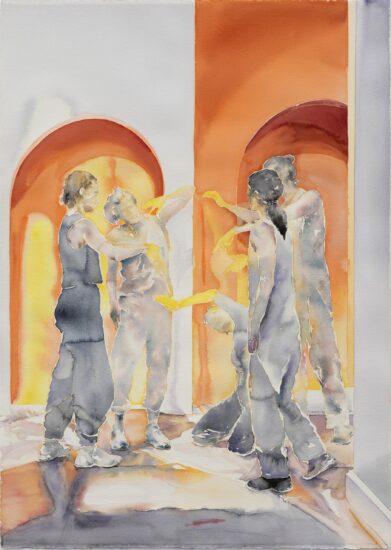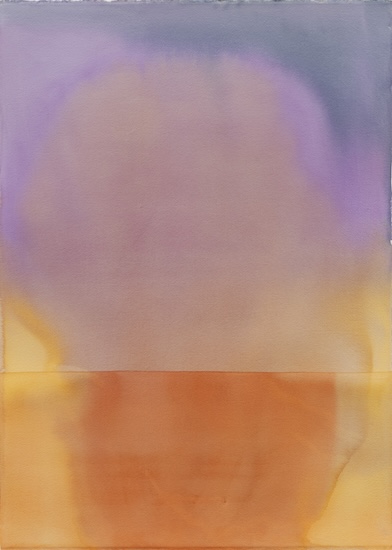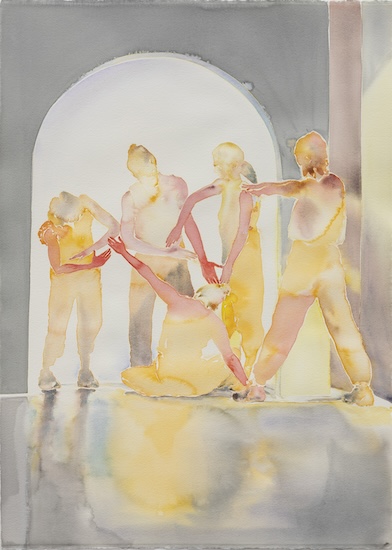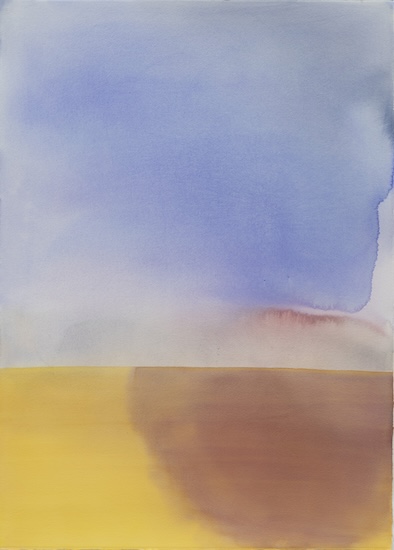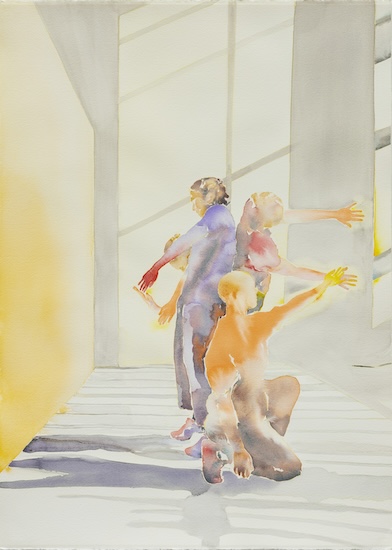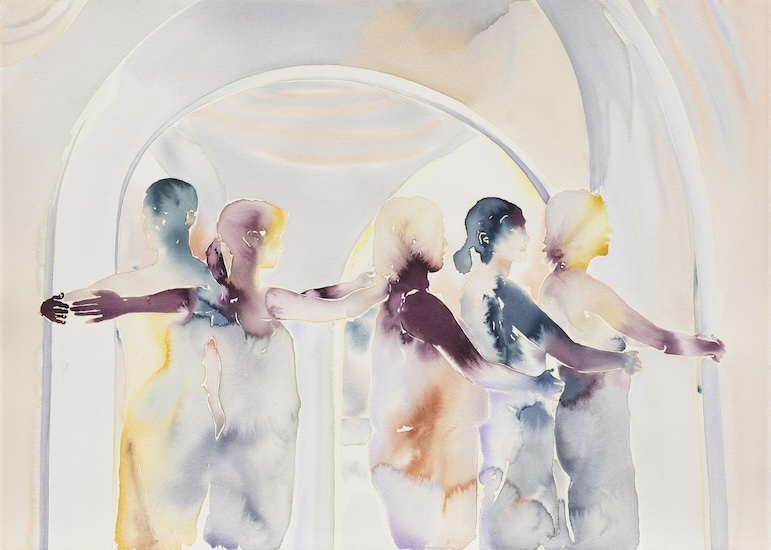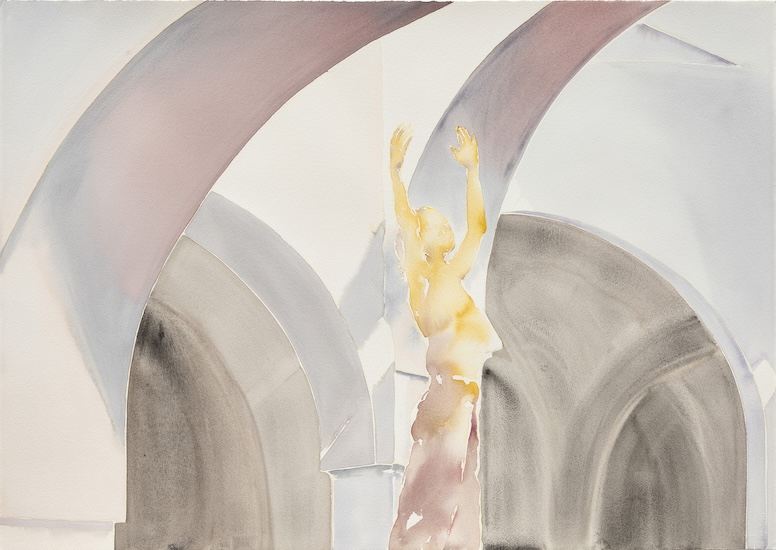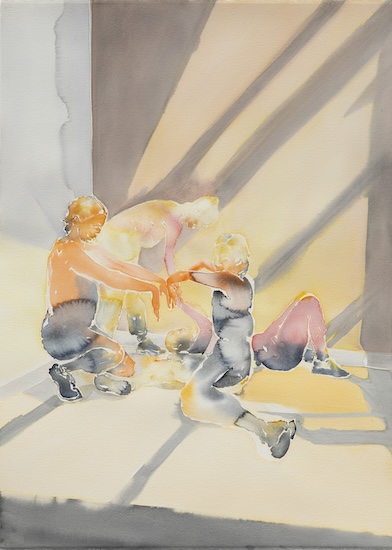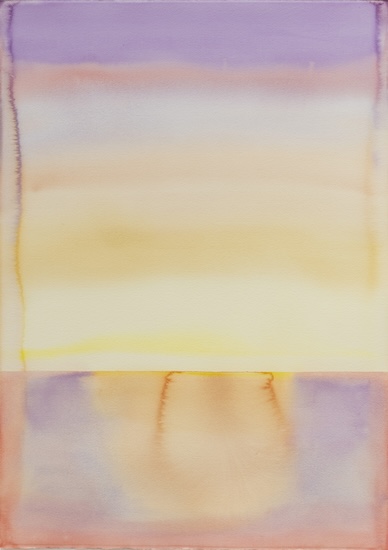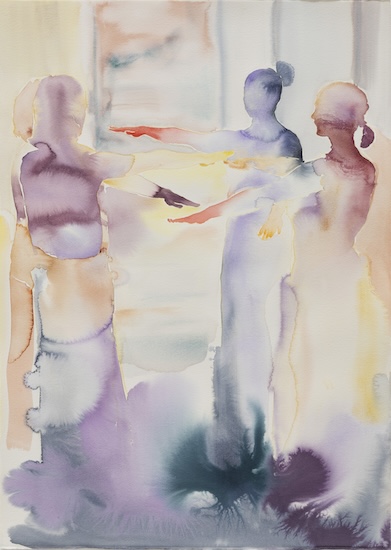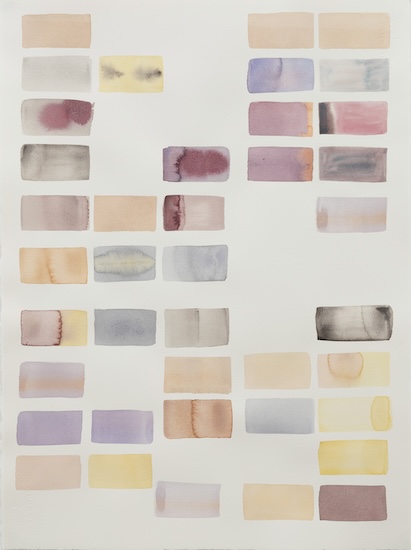Ames Yavuz is excited to present our first solo exhibition with Australian artist Rochelle Haley, Gestural Architecture. This evocative body of work brings together watercolour paintings and a textile installation that explore the fluid interplay of light, movement, and space, drawing from Haley’s deep engagement with both painting and performance.
At the heart of Gestural Architecture is Haley’s fascination with colour as a living force—its ability to shift, change, and embody the rhythms of motion and the radiant energy of light. Her watercolour works, with their fluidity and transparency, act as both abstract compositions and registers of movement, inviting viewers to contemplate how light, space, and gesture intersect. This body of work is infused with the sensibility of A Sun Dance, her performance presented at the National Gallery of Australia and Tate St Ives, where dancers moved through architectural spaces, embodying the dance of sunlight and shadow. In much the same way, the paintings invite the viewer to experience space as a living, breathing entity, one that shifts in response to the presence and movement of the body.
Gestural Architecture is both intimate and expansive, offering a rich, visceral experience that connects the body, space, and perception in a dynamic and living way. Her work is an invitation to experience the sensation of space as a living, breathing entity, where the body’s movement acts as both subject and medium. Through these works, Haley reimagines the relationship between painting, abstraction, temporality, and the embodied experience of space, creating an ever-evolving dialogue between the seen and the felt.
“In this world, painting is never static. Watercolours shimmer with transparency and liquidity, capturing the fleeting architectures of bodies in motion. The figures depicted are not fixed in time but emerge and dissolve in soft washes of pigment—an echo of a deep engagement with choreography. These are paintings attuned to sensation, where colour is not merely applied but experienced as a dynamic presence. Here, movement is not just represented but felt, an extension of a longstanding dialogue with dance and the spatial vocabularies of the performing body. Colour, in this context, is a living force, shifting and responsive, much like the way light refracts across skin or the way time bends through the patterns of choreography. It is not a static hue but a force of energy, motion, and transformation” writes Alexie Glass-Kantor in her accompanying exhibition essay.
